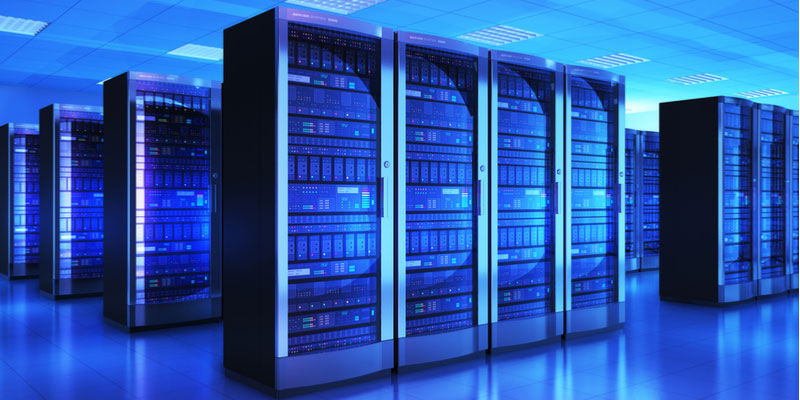High server room temperatures can cause equipment to shut down, overheat, breakdown, or catch fire. That’s why monitoring systems for data and server rooms are so important. You don’t need to keep your server room freezing cold, not only is it expensive but it’s also unnecessary. Not to mention, you don’t want your server room to be too cold either. By adding the right monitoring systems in the right places, you can keep your data room slightly warmer without as much risk.
The average ambient room temperature for a server room is somewhere between 64° and 80° F. The optimal zone is between 68° and 71° F, but many server rooms are much warmer. In fact, some people keep their server rooms at over 80° F, including Google. The key is to monitor server data centers to prevent a slight uptick in temperatures or humidity from having disastrous results.
Adding Temperature and Humidity Sensors
If an AC unit fails, it won’t take long for equipment and fans to overheat. Airflow and temperature sensors are crucial to detect and alert you to any issues or failures within cooling systems. They are even more important in server rooms that are kept at higher temperatures to reduce cooling costs. The higher average temperatures, the greater the risk of overheating or fire. Adding sensors helps reduce that risk.
Sensors are commonly added to racks as well. According to the American Society of Heating, Refrigerating and Air-Conditioning Engineers (ASHRAE), each rack should be outfitted with no fewer than 6 temperature sensors. Other experts say that number can be closer to 3 sensors.
If following ASHRAE recommendations, sensors are to be placed at the top, middle, and bottom of the rack. Sensors that keep track of outtake temperature are placed at the back of the rack. Sensors employed to track intake temperatures are placed at the front and bottom of the rack.
Smaller data or server rooms often go with wired sensors, while larger rooms may benefit from the addition of wireless sensors.
Server Room Humidity
Server room humidity is just as important as temperature but it is commonly overlooked. Relative humidity should fall somewhere around 40% to 60% rH. If the room is too dry, it results in a buildup of static energy. On the other hand, if the room is too humid, it can lead to corrosion that damages and breaks down equipment.
Server Room Ventilation & Air Circulation
Ventilation can make all the difference to a successful server room. Some tips to improve ventilation and air circulation include:
- Keep a door open if exterior temperatures are cool enough.
- Open a window if it’s cool outside.
- Remove a ceiling tile so that heat has somewhere to move—up and out!
- Place fans nearby heat-releasing segments of equipment. Direct fans so that heat moves away from server equipment, as opposed to pushing it back in the direction of the machine. You could also place fans near an open door or window to direct more cool air towards the intake on servers.
- Adjust your air volume with help from a building engineer or industry professional. If your system is equipped with a variable air volume box you can set it to push more air to the server room than other parts of the building served by the same HVAC system.
- Add portable air conditioning units to your server room. This gives your server room its own AC system, allowing you to set temperatures as needed.

